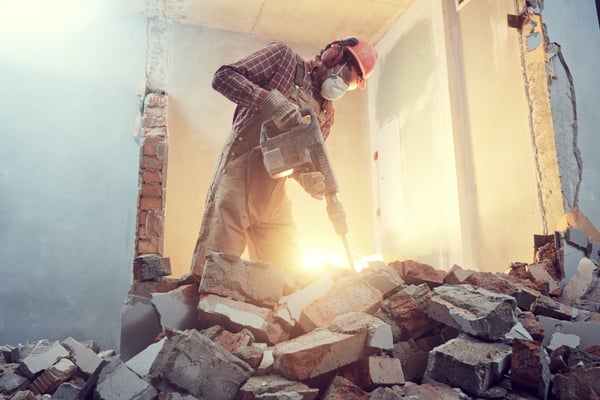The year 2021 will represent a challenge for the commercial real estate sector, according to Deloitte. However, the rise of remote working and e-commerce has increased the need for specific services. For example, companies need more storage space for products sold online and their expanding e-commerce platforms must be supported by data centers.
Developers can achieve an excellent return on investment by repurposing buildings for high-demand occupancies. This requires less investment than new construction, especially if existing spaces can be adapted with few changes.
Are you planning an adaptive reuse project? Get a professional MEP design.
In many cases, adaptive reuse offers several advantages over new development. There is no need to build from scratch and many of the zoning and licensing requirements have already been met. A building conversion can also be completed more quickly than new construction, and vacant spaces are abundant following COVID-19 lockdowns.

Adaptive reuse requires less investment than new construction

Compared to adaptive reuse, new construction has additional steps such as footings, footings, structural work, and masonry. These steps are skipped when an existing building is repurposed, which saves time and capital. For a commercial real estate company with many vacant properties, repurposing requires much less investment than demolishing and using the land for new construction.
The cost of reusing buildings decreases further when existing resources are used in new occupancy. The following are some examples of adaptive reuse projects that require few changes, which we have covered in previous articles:
- Repurposing hotels into apartment buildings
- Repurposing shopping malls into warehouses or data centers
- Repurposing offices into apartments
Housing demand is ever-increasing and the digitalization of business requires storage and IT services. Adaptive reuse is a viable strategy for offering these services in existing properties, especially if they are vacant. In addition to being cheaper than new construction, an adaptive reuse project can be ready for tenants in less time.
Adaptive reuse simplifies zoning and code compliance

New construction must be designed from scratch in accordance with local zoning regulations and building codes and then approved. However, existing buildings have already met most of these requirements, and repurposing is similar to equipping a core and shell building. By working with professional MEP engineers, a reuse project can be designed and approved quickly.
However, repurposing offers an opportunity to improve aspects such as energy efficiency, indoor air quality and water use. Even when existing MEP installations are code compliant, there may be opportunities to save on utility bills by upgrading them. Additionally, the COVID-19 pandemic has raised awareness about the importance of healthy buildings and indoor air quality is valuable to potential tenants.
Code requirements for commercial spaces change depending on occupancy classification, but there are commonalities when existing and new occupancies are similar. For this reason, code compliance in reuse tends to be simpler than in new construction.
Adaptive reuse takes advantage of low interest rates

In 2020, the US Federal Reserve reduced the federal funds rate to 0.00%-0.25% as an economic stimulus. As a result, interest rates have been reduced across the entire financial sector, providing an excellent opportunity for property developers.
- Interest rates are expected to rise again as the country recovers from the COVID-19 pandemic.
- However, adaptive reuse projects can take advantage of the low interest rates available, thanks to their shorter term.
On properties with large roof areas, developers can also benefit from the two-year extension of the Solar Investment Tax Credit . The incentive is currently at 26% and was originally going to decrease to 22% and 10% in 2021 and 2022. However, a December Congressional bill extended the 26% rate for two years, and the phase-out will take place through 2023 and 2024 .
PACE commercial loans are also viable in repurposing a building as they offer low interest rates and repayment terms of up to 30 years. Additionally, the loan is repaid with property tax assessments and can be transferred to a new owner if the property is sold.
Conclusion
Under current conditions, adaptive reuse is an excellent business decision for commercial real estate companies. Vacant properties that don't generate income can become valuable in a short time, and many code and zoning requirements are already met. There is also the opportunity to finance projects at lower interest rates than usual, which further improves the return on investment.
Most of the technical challenges when reusing a building are related to mechanical, electrical and plumbing installations. However, a qualified MEP engineering firm can redesign these systems while optimizing project costs.

